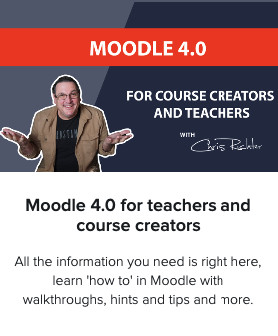I have always been an advocate for interactive content, having developed content for mobile devices and many online education websites. I have slightly modified my opinion of interactivity in that I assumed small interactive activities would help stimulate student. However I have found that although they do help, there may be better ways to make things interactive.
It should be noted that the best way to present the training materials should be based on each cohort and what format is the most appropriate for each.
My change of opinion came about while talking to an arts degree major about their music studies. I asked how the three years of study went and what did they learn. The response surprised me. They did learn a lot from the training, one particular day had the highest impact and the most useful learning. A one day workshop with a collection of professional touring and recording artists. The day was spent listening to them present and listening to interviews and panel discussions.
This had the greatest amount of educational impact. Was it interactive, not really, in terms of the individual participating, but was it educationally valuable? Extremely.
From this I started to research and re-think what education really is. A collection of outcomes that need to be covered in order for a student to learn a skill or process. And if completing online interactive activities helps, then this is a good thing. Could money and time be better spent giving people more opportunities? The opportunity to communicate, experience, meet and learn from real people that are doing exactly what it is the students are trying to learn? This to me seems like real interaction. In this case, I would see a huge advantage to record videos of experts in industries doing what the students need to learn, in conjunction with student spending live time with teachers and experts. This type of interaction provides a real and more unforgettable experience than many of the previous activities that have been developed.
One of the most valuable tools that we have now is live video streaming. This valuable tool connects the two most valuable assets in education, teachers and students. The connection of these two valuable assets in real time produces interaction. This interaction is the most effective way to pass on knowledge.
The main online education platforms like Udemy, teachable and thinkific have spent millions discovering the best way to teach. This is because their business model relies on a consistent flow of ‘happy’ students. Their model relies on experts explaining what, how and why they do things in pre-recorded video to present to students. But if you study the people who are putting up the courses, the majority do not rely on this as their key income from teaching. What they do is use the online courses to promote their online webinars and works or programs that they then sell for $1000’s. So even though pre-recorded video solves many issues with asynchronous learning, the core function of many is to still use real time education as the core product.
If all the information is online, why do we need to go to conferences?
Why is it that a live sports game, watched on television, is so much more exciting, emotional and connected than a replay?
When people watch a live game, there is an expectation that is different to pre-recorded, a buzz, an excitement and a different mental state. People seem to be more focused and more responsive when it is live.
Having said this, the value in pre-recorded TED talks is extremely high, especially when doing research. If education looked at video in terms of research useful instructional content, mixed with invaluable live interactive content, then we may have a solution to more interactive content.
I participated in a very clever online presentation recently. A well known online expert presented a one hour presentation with approximately 900 people online to watch and participate. Many people didn’t realise that the presenter was pre-recorded. The live chat feed flew past with people asking questions, and a team of two event organisers responded to the questions. At the end of the session they passed on the ‘important’ questions to the real presenter to comment on over the next few days in response to specific issues. Yes, to many this was a real ‘live’ session. I wouldn’t recommend advertising it the way that they did. The principle of having a pre-recorded video with live interaction happening at the same time has a lot of validity. The video becomes interactive because the audience is interacting with the facilitators and with each other.





